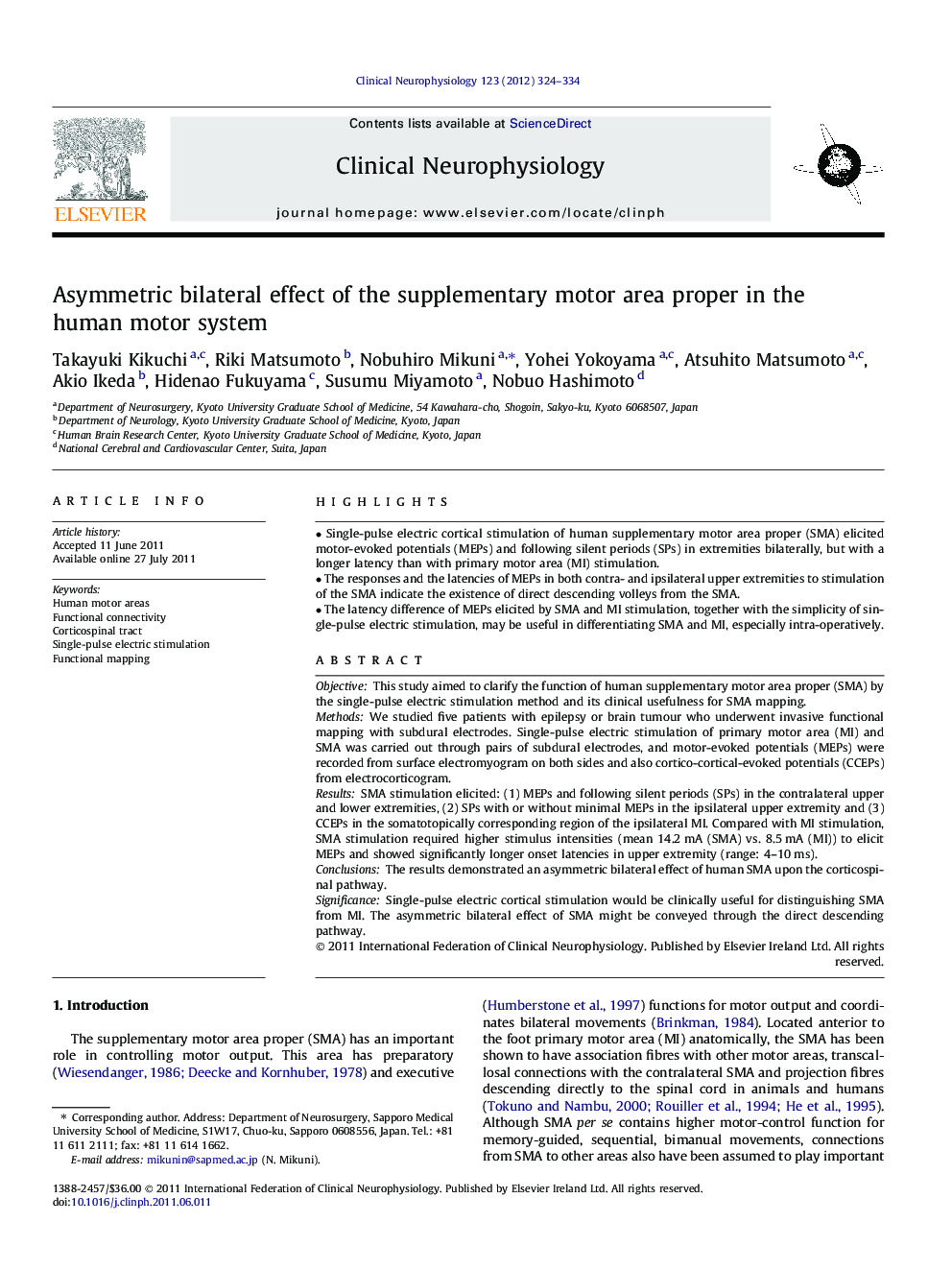| Article ID | Journal | Published Year | Pages | File Type |
|---|---|---|---|---|
| 3045631 | Clinical Neurophysiology | 2012 | 11 Pages |
ObjectiveThis study aimed to clarify the function of human supplementary motor area proper (SMA) by the single-pulse electric stimulation method and its clinical usefulness for SMA mapping.MethodsWe studied five patients with epilepsy or brain tumour who underwent invasive functional mapping with subdural electrodes. Single-pulse electric stimulation of primary motor area (MI) and SMA was carried out through pairs of subdural electrodes, and motor-evoked potentials (MEPs) were recorded from surface electromyogram on both sides and also cortico-cortical-evoked potentials (CCEPs) from electrocorticogram.ResultsSMA stimulation elicited: (1) MEPs and following silent periods (SPs) in the contralateral upper and lower extremities, (2) SPs with or without minimal MEPs in the ipsilateral upper extremity and (3) CCEPs in the somatotopically corresponding region of the ipsilateral MI. Compared with MI stimulation, SMA stimulation required higher stimulus intensities (mean 14.2 mA (SMA) vs. 8.5 mA (MI)) to elicit MEPs and showed significantly longer onset latencies in upper extremity (range: 4–10 ms).ConclusionsThe results demonstrated an asymmetric bilateral effect of human SMA upon the corticospinal pathway.SignificanceSingle-pulse electric cortical stimulation would be clinically useful for distinguishing SMA from MI. The asymmetric bilateral effect of SMA might be conveyed through the direct descending pathway.
► Single-pulse electric cortical stimulation of human supplementary motor area proper (SMA) elicited motor-evoked potentials (MEPs) and following silent periods (SPs) in extremities bilaterally, but with a longer latency than with primary motor area (MI) stimulation. ► The responses and the latencies of MEPs in both contra- and ipsilateral upper extremities to stimulation of the SMA indicate the existence of direct descending volleys from the SMA. ► The latency difference of MEPs elicited by SMA and MI stimulation, together with the simplicity of single-pulse electric stimulation, may be useful in differentiating SMA and MI, especially intra-operatively.
